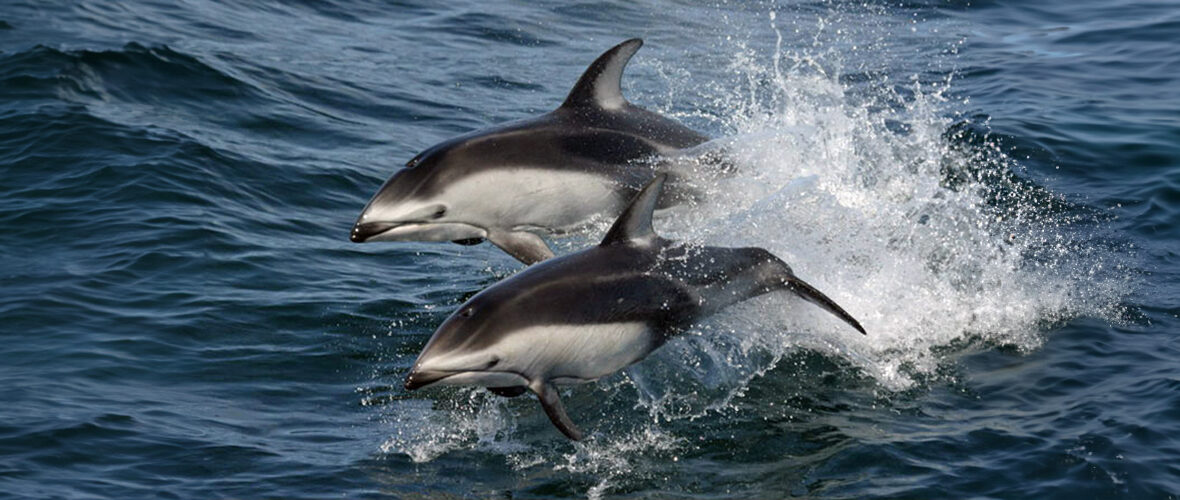
The Pacific white-sided dolphin, aka hookfin porpoise, is found in the temperate and cool waters of the North Pacific Ocean. They are similar to the dusky dolphin, morphologically. They face similar threats as other oceanic dolphin species, that being overfishing and climate change (which can have an impact on the availability of their food, and other consequences). The IUCN lists these dolphins as Least Concern. Their population trend is currently unknown.
First the Stats…
Scientific name: Lagenorhynchus obliquidens
Weight: Up to 440 lbs.
Length: Up to 8.2 feet
Lifespan: Up to 40+ years
Now on to the Facts!
1.) These critters were named in 1865 by Smithsonian mammalogist Theodore Nicholas Gill.
2.) Frank Cipriano suggests that Pacific white-sided dolphins and dusky dolphins diverged genetically approximately 2,000,000 years ago.
3.) Pods typically reach sizes of up to 90 individuals, but supergroups have been documented consisting of up to 300 individuals.
4.) Hake, anchovies, herring, salmon, cod, and squid are all on the menu.
5.) These dolphins frequently engage in bow-riding (riding the current created from boats) and somersaults.
But wait, there’s more on the Pacific white-sided dolphin!
6.) The sick and injured are often cared for and looked after.
7.) Females undergo up to a 12 month gestation (pregnancy) that yields a single calf.
Did you know…?
These dolphins have up to 60 teeth.
8.) Pacific white-sided dolphins typically sleep on average 7 hours a night.
9.) Many dolphins were killed in drift nets until 1933 when many types of these nets were banned. However, many dolphins are still killed each year due to Japanese hunting drives.
10.) Captive white-sided dolphins tend to eat less than their wild counterparts. This may be due to temperature variants and less energy needed to obtain food.
Now a Short Pacific White-Sided Dolphin Video!
Be sure to share & comment below! Also, check out the Critter Science YouTube channel. Videos added regularly!
Want to suggest a critter for me to write about? Let me know here.
Some source material acquired from: Wikipedia & IUCN
Photo credit: NMFS Southwest Fisheries Science Center (NOAA)



